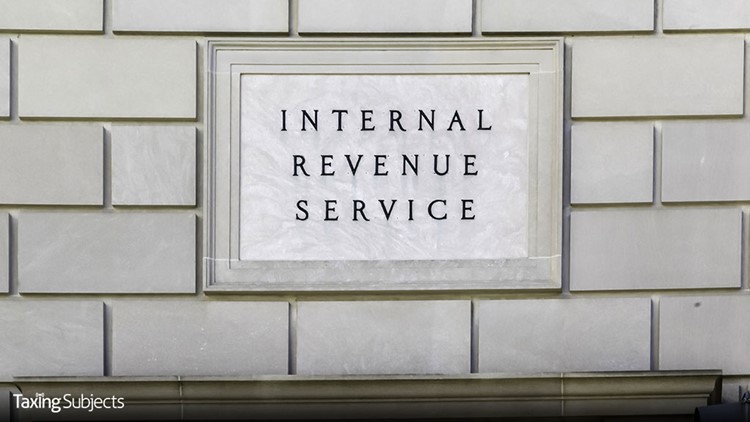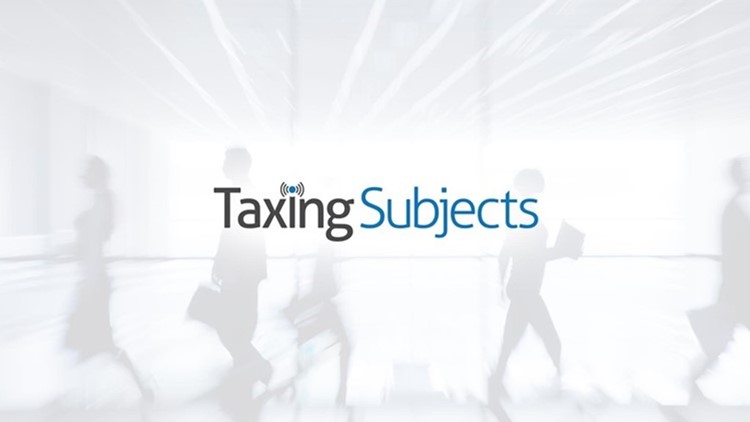
by | Jan 22, 2021 | Tax Tips and News
A recently released notice allows employers who elected to defer certain employees’ taxes to withhold and pay those deferred taxes throughout 2021—instead of just the first four months of the year.
The action comes in Notice 2021-11 which has been released by the Internal Revenue Service.
It started with a presidential memorandum signed on Aug. 8, 2020 that led to Notice 2020-65 being issued on Aug. 28, giving employers the option to defer certain employees’ Social Security taxes from Sept. 1, 2020, to Dec. 31, 2020.
The deferment applies to employees who are paid less than $4,000 every two weeks—or an equivalent amount for other pay periods—with each pay period considered separately.
These taxes are technically called Old Age, Survivors and Disability Insurance or OASDI, and are calculated at 6.2% of employees’ wages.
Same taxes, more time
Originally, any taxes deferred under Notice 2020-65 are withheld and paid ratably from employee wages between Jan. 1, 2021 and April 30, 2021.
However, Notice 2021-11 expands that payment period: “…this notice modifies Notice 2020-65, 2020-38 I.R.B. 567 (Sept. 14, 2020), by extending the time period during which employers must withhold and pay Applicable Taxes (as defined in Notice 2020-65 and described herein). Specifically, this notice provides that the end date of the period during which employers must withhold and pay Applicable Taxes is postponed from April 30, 2021, to Dec. 31, 2021, and associated interest, penalties, and additions to tax for late payment with respect to any unpaid Applicable Taxes will begin to accrue on Jan. 1, 2022, rather than on May 1, 2021,” Notice-2021-11 states.
Payments made by Jan. 3, 2022, will be considered timely, since Dec. 31, 2021, is a legal holiday. Penalties, interest and additions will now start to apply on Jan. 1, 2022 for any unpaid balances.
Employees could see their deferred taxes being collected immediately. The IRS recommends they check with their company’s payroll contact on what their collection schedule will be.
For more information on this and other tax relief relative to the COVID-19 pandemic, check out the IRS website at IRS.gov.
– Story provided by TaxingSubjects.com

by | Jan 22, 2021 | Tax Tips and News
The Internal Revenue Service has issued a notice that seeks to expand relief for funds and investors affected by the COVID-19 pandemic.
Notice 2021-10 provides additional relief under section 7508A of the Internal Revenue Code for Qualified Opportunity Funds (QOFs) and their investors relating to the coronavirus pandemic.
Specifically, the notice extends relief already spelled out in Notice 2020-39, 2020-26 I.R.B. 984 that applies to QOFs and their investors.
What are the key provisions of Qualified Opportunity Fund relief?
While Qualified Opportunity Funds received one round of relief in 2020, this latest notice expands on that in a number of key areas:
The 180-day investment requirement for QOF investors: A taxpayer has a 180-day window to make an investment in a QOF that satisfies requirements. If the last day of the investment period falls on or after April 1, 2020, and before March 31, 2021, the last day of that 180-day investment period is pushed back to March 31, 2021.
The 30-month substantial improvement period for QOFs and Qualified Opportunity Zone firms: The original rules for Qualified Opportunity Funds also set out a specified 30-month period to make substantial improvements to the property held by an QOF or other Qualified Opportunity Zone business.
This new notice says the period starting on April 1, 2020 and ending on March 31, 2021 “is disregarded in determining any 30-month substantial improvement period.”
Other relief measures: This notice also provides additional relief pursuant to section 1400Z-2(f)(3) and Income Tax Regulations under section 1400Z-2 of the Code (section 1400Z 2 regulations).
Many of the extensions and additional relief are automatic; Qualified Opportunity Funds do not have to call the IRS or send letters or other documents to the agency to get the relief. However, certain steps may be needed and additional forms completed to be filed with the QOF’s federal income tax return.
See the notice and Form 8996 instructions for more details.
– Story provided by TaxingSubjects.com

by | Jan 20, 2021 | Tax Tips and News
The Internal Revenue Service has set Friday, Feb. 12, 2021, as the start of the nation’s tax season. That’s the day the agency will begin accepting and processing 2020 tax year returns.
The IRS says the February start date for individual returns will give it time to do additional programming and testing of its computer systems in the wake of tax law changes that came through on Dec. 27, providing a second round of Economic Impact Payments.
These programming changes are termed “critical” by the IRS. If filing season opened without these changes in place, the agency says there could be a delay in getting refunds to taxpayers. The changes, they stress, ensure that eligible people will receive any remaining stimulus money as a Recovery Rebate Credit when they file their 2020 tax return.
In order to speed up the refund process, the IRS recommends filing electronically with direct deposit as soon as taxpayers have the filing information they need. People can file immediately using the tax professional of their choice. They’re starting to accept tax returns now; the returns will be held and transmitted to the IRS starting on Feb. 12.
“Planning for the nation’s filing season process is a massive undertaking, and IRS teams have been working non-stop to prepare for this as well as delivering Economic Impact Payments in record time,” said IRS Commissioner Chuck Rettig. “Given the pandemic, this is one of the nation’s most important filing seasons ever. This start date will ensure that people get their needed tax refunds quickly while also making sure they receive any remaining stimulus payments they are eligible for as quickly as possible.”
Last year’s average tax refund was more than $2,500. More than 150 million tax returns are expected to be filed this year, with the vast majority before the April 15 deadline.
Some delays are the new normal
Taxpayers should keep in mind that under the PATH Act, the IRS cannot issue a refund involving the Earned Income Tax Credit (EITC) or the Additional Child Tax Credit (ACTC) before mid-February.
The law gives additional time to help the IRS stop fraudulent refunds and claims from being issued—especially to identity thieves. Therefore, the IRS expects a refund available for these credits in the first week of March if taxpayers file electronically with direct deposit and there are no issues with their tax returns.
Taxpayers should check Where’s My Refund for their individual refund date.
Overall, the IRS anticipates nine out of 10 taxpayers will receive their refund within 21 days of when they file electronically with direct deposit if there are no issues with their tax return. The IRS urges taxpayers and tax professionals to file electronically. Avoid filing paper returns wherever possible to escape delays in processing.
Tips for faster filing
To speed refunds and help with tax filing, the IRS urges taxpayers and tax pros to follow some simple steps:
- File electronically and use direct deposit for the quickest refunds.
- Check IRS.gov for the latest tax information, including the latest on Economic Impact Payments. There is no need to call.
- Those who may be eligible for stimulus payments should carefully review the guidelines for the Recovery Rebate Credit. Most people received Economic Impact Payments automatically, and anyone who received the maximum amount does not need to include any information about their payments when they file. However, those who didn’t receive a payment or only received a partial payment may be eligible to claim the Recovery Rebate Credit when they file their 2020 tax return.
- Remember, advance stimulus payments received separately are not taxable, and they do not reduce the taxpayer’s refund when they file in 2021.
Dates to remember
Enter these dates on the calendar; they’re important for this year’s filing season:
- January 29. Earned Income Tax Credit Awareness Day to raise awareness of valuable tax credits available to many people—including the option to use prior-year income to qualify.
- February 12. IRS begins 2021 tax season. Individual tax returns start being accepted and processing begins.
- February 22. Projected date for the IRS.gov Where’s My Refund tool being updated for those claiming EITC and ACTC, also referred to as PATH Act returns.
- First week of March. Tax refunds begin reaching filers claiming EITC and ACTC (PATH Act returns) for those who file electronically with direct deposit and there are no issues with their tax returns.
- April 15. Deadline for filing 2020 tax returns.
- October 15. Deadline to file for those requesting an extension on their 2020 tax returns
Patience will be rewarded
As we mentioned, the opening of filing season follows the IRS’ work to update its computer programming and to test its systems, so they can factor in the second Economic Impact Payments and other changes in the tax laws.
The changes are complex. It takes time to help ensure the proper processing of tax returns and refunds. To this, add the need for coordination with the rest of the tax software industry, and the Feb. 12 start date is the result.
The IRS says there’s simply no way around the later start: the agency simply must ensure its systems are prepared to properly process and check tax returns to verify the proper amount of EIPs are credited on taxpayer accounts—and provide remaining funds to eligible taxpayers.
And late starts to the filing season aren’t unknown. While tax seasons frequently begin in late January, there have been five instances since 2007 when filing seasons didn’t start for some taxpayers until February because of tax law changes made just before tax time.
Source: IR-2021-16
– Story provided by TaxingSubjects.com

by | Jan 16, 2021 | Tax Tips and News
The Internal Revenue Service is reminding taxpayers that today—January 15, 2021—is the deadline for making a tax year 2020 fourth quarter estimated tax payment. The goal of the press release is to prevent taxpayers who did not pay enough tax throughout 2020 from owing tax or a penalty during filing season.
The IRS says there are two methods for managing income tax payments in our pay-as-you-go system:
- Withholding from paychecks, pension payments, Social Security benefits or certain other government payments including unemployment compensation in some cases. This is how most people pay most of their tax.
- Making quarterly estimated tax payments throughout the year to the IRS. Self-employed people and investors, among others, often pay tax this way.
Even if taxpayers choose to withhold tax from their paychecks throughout the year, making an estimated tax payment can help them avoid owing tax in April due to investment-related income or under-withholding. If a taxpayer suddenly owes tax despite their financial situation having not changed, it could mean they need to adjust withholding for the following tax year.
How do taxpayers determine the amount of tax they owe?
The IRS lists three resources for determining tax liability:
- IRS Tax Withholding Estimator
- Form 1040-ES, Estimated Tax for Individuals
- Publication 505, Tax Withholding and Estimated Tax
The IRS Tax Withholding Estimator is located at IRS.gov/Individuals/Tax-Withholding-Estimator, and that page lists some simple steps taxpayers need to follow prior to using the online tool:
- Gather the most recent pay statements for yourself, and if you are married, for your spouse too.
- Gather information for other sources of income you may have.
- Have your most recent income tax return handy.
Form 1040-ES, on the other hand, includes a worksheet that taxpayers can use to calculate what they owe, and Publication 505 has information that “can be especially helpful to those who have dividend or capital gain income, owe alternative minimum tax or self-employment tax, or have other special situations.”
How do taxpayers make estimated tax payments?
There are three government-provided methods for making an estimated tax payment online:
The IRS says that those who prefer writing a check will need to “make [it] payable to the ‘United States Treasury.’” More information can be found at IRS.gov/Payments.
Source: IR-2021-13; “Tax Withholding Estimator”
– Story provided by TaxingSubjects.com

by | Jan 14, 2021 | Tax Tips and News
The Internal Revenue Service submitted the Taxpayer First Act Report to Congressional leaders this week. As the name suggests, this 253-page document is required by the 2019 Taxpayer First Act—and it’s an essential step in determining how the IRS will improve the service provided to taxpayers.
The Taxpayer First Act Report identifies a wide range of organizational changes that would improve “the taxpayer experience,” from personnel training and educational outreach to enforcement actions. Here is the list of “three integrated sets of recommendations required by law” from the press release:
- A taxpayer experience strategy that focuses on creating a proactive, convenient, seamless, personalized and effective interaction with taxpayers and the tax professional community;
- A comprehensive training strategy, a multi-faceted approach to empowering the workforce and equipping them with the skills and tools they need to advance their careers, provide high-quality service to taxpayers and enhance the taxpayer experience, and
- A recommended organizational design that will increase collaboration, coordinate strategic implementation of large-scale initiatives, enhance innovation, strengthen communications and prioritize taxpayer rights, all with the aim of improving the taxpayer experience.
The report establishes a road map for improving essentially every facet of the how the IRS ensures voluntary taxpayer compliance with tax law, and these scalable changes will understandably take time to develop and implement. While IRS Commissioner Chuck Rettig predicts the entire process to take place across 10 years, the agency notes that it will begin working on some changes this year.
Further, the Internal Revenue Service will not be alone in this work: “The IRS will continue conversations with key stakeholders and Congressional committees to secure funding and begin to work toward implementation of these recommendations over the next several years.”
Source: IR-2021-07
– Story provided by TaxingSubjects.com






